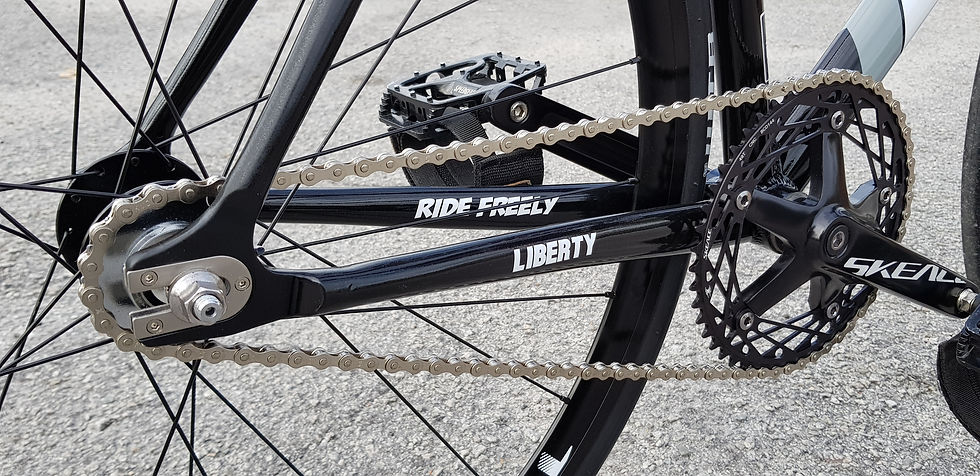Determining Your Gear Ratio
- Alvin Lee
- Jan 25, 2018
- 1 min read
Basically, you have two chain rings that the chain rides on: the big one in the front by the pedals and the small one in the back on the rear wheel. The first number (xx/yy) refers to the number of teeth (sharp pointy things) on the chain ring by the pedals. The (yy) second number refers to the number of teeth in the rear cog (name for smaller gear ring attached to the back wheel).

If the number gets higher, it means you're either shrinking the number of teeth on the rear cog or growing the number of teeth on the main chainring. Similarly, if the number gets lower, it means you're shrinking the main chainring or growing the rear cog.
What does a higher or lower coefficient mean? Well - A lower number will make it easier to accelerate and maneuver the bike at slow speeds but will make for lower top speeds (high cadence) ie 44 x 16. A higher number will make it harder to accelerate but will give you a higher top speed (low cadence) ie. 49 x 15.

Whether you choose a higher or a lower ratios are all based on personal preference and the way you ride your city or the track. Generally riders will go for a lower ratio for commuting as it also makes it easier to perform skids in emergency situations and it's easier to tackle any hilly terrains as opposed to riders who race in the tracks where a higher ratio is needed to achieve the optimum speed.





